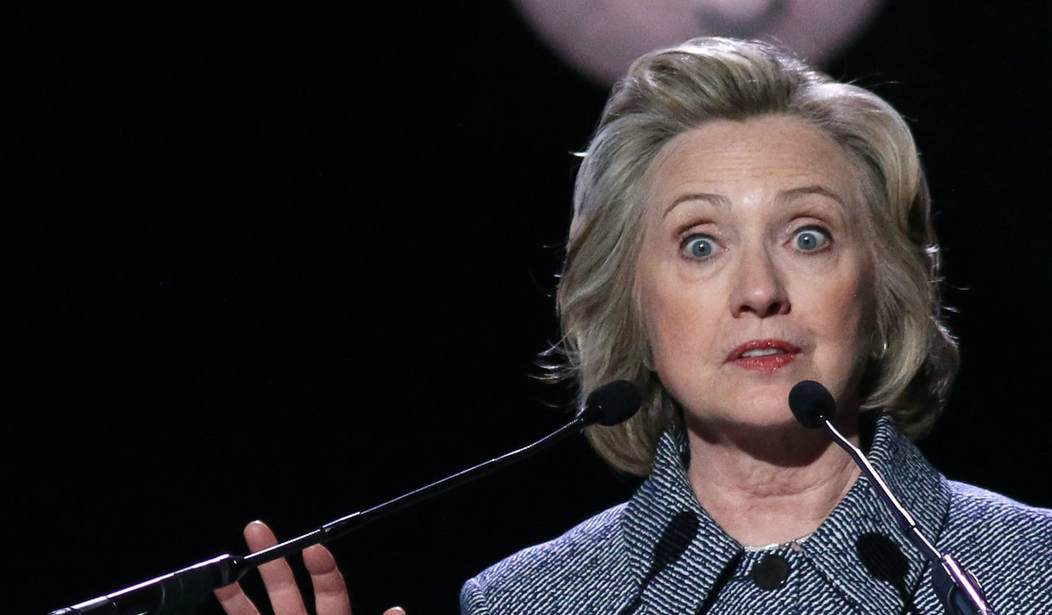In 2010, the FBI arrested ten Russian spies as part of “Operation Ghost Stories.” According to a top FBI official, the agency had to act quickly because the “deep cover” agents had come very close to “a sitting US cabinet member.” They had already infiltrated then-Secretary of State Hillary Clinton’s inner circle, befriending a Democratic fundraiser close to Clinton.
Clinton’s Russian connections have attracted more scrutiny following recent revelations of an FBI investigation into Russian company Rosatom, which gained control of 20 percent of U.S. uranium in the 2010 Uranium One deal. The fact that the Russian spies attempted to infiltrate Clinton’s network just before the Uranium One deal has been previously reported by PJ Media’s Pat Poole, and the connection to the recent revelations of the FBI investigation into Rosatom was reported by Center for Security Policy analyst J. Michael Waller in The Daily Caller Friday.
“We were becoming very concerned,” Frank Figliuzzi, the FBI’s assistant director of counterintelligence, told the BBC in 2012. “They were getting close enough to a sitting US cabinet member that we thought we could no longer allow this to continue.”
There are many reasons to suggest Clinton was this “sitting US cabinet member.” In June 2010, Barbara Morea, president of Morea Financial Services in Manhattan, confirmed that “Cynthia Murphy,” Russian External Intelligence Service (SVR) spy Lidiya Guryeva, was a longtime employee and vice president at the company. The company managed the finances of Alan Patricof, one of New York’s top Democratic donors, who fundraised for Clinton’s Senate and presidential campaigns.
Federal court documents reported that Guryeva had “several work-related personal meetings” with “a prominent New York-based financier.” The complaint added that Guryeva and her husband reported back to Moscow that the financier was “prominent in politics,” “an active fundraiser for” a major political party, and a “personal friend” of a current Cabinet official. Patricof fit every one of these descriptions.
Orders from Moscow suggested Patricof might “provide [Guryeva] with remarks re US foreign policy, ‘roumors’ [sic] about White house internal ‘kitchen…'” Worse, the court document also noted that Guryeva “explained to [her husband] that he would not be able to work at the top echelons of certain parts of the United States Government — the State Department, for example.”
While the documents never mention Hillary Clinton by name, the evidence all points in her direction. Guryeva was focused on Patricof, a close friend of Clinton’s, sought to gain information about the White House from a source close to Clinton, and expressed a familiarity with the State Department, the agency Hillary Clinton ran.
Patricof confirmed that he appeared to have been the target, and said he had never talked politics with Guryeva.
Clinton spokesmen at the time insisted that the secretary of State was not the Russian spy ring’s target, but Figliuzzi’s comment suggests a fear that the SVR agents would get too close to a certain cabinet member.
The FBI arrested the Russian spies on June 28, 2010, one day before Bill Clinton gave a speech in Moscow to a Kremlin-connected investment bank, Renaissance Capital. Clinton received $500,000 for this speech.
At the time, Renaissance Capital analysts suggested investors place their money on Uranium One, a Canadian company with control over 20 percent of U.S. uranium. In a July 2010 research report, Renaissance analysts called the company “the best play” in uranium markets.
Bill Clinton’s speech, and the Renaissance Capital report, came while the Committee on Foreign Investment in the United States (CFIUS) was considering the sale of Uranium One to Rosatom, a Russian company which had been under FBI investigation at the time.
The FBI kept the investigation secret, even when it would have stopped the disastrous Uranium One approval. There is still no explanation as to why it was kept secret at this vital point. Robert Mueller, the current head of the investigation into Russian connections to President Donald Trump, led the FBI at the time, and some have started calling for his recusal from the Trump-Russia investigation, because he kept the Rosatom investigation quiet.
Despite the FBI investigation, CFIUS fast-tracked the Uranium One approval, finishing it in 52 days, rather than the mandatory 75-day review process.
To make matters worse, Uranium One’s chairman directed $2.35 million in contributions to the Clinton Foundation.
As Center for Security Policy analyst J. Michael Waller pointed out at The Daily Caller, Clinton had even more questionable ties to Russia. As secretary of State, she pledged to “reset” relations with Russia. She opposed what would become the Magnitsky Act to sanction Russian oligarchs. She also told Russian television that “our goal is to help strengthen Russia.”
At the very beginning of her tenure at State, Clinton arranged for 28 American tech CEOs and venture capitalists (17 of them Clinton Foundation donors) to visit a Russian high-tech hub called Skolkovo. The U.S. military calls this hub “an overt alternative to clandestine industrial espionage.” This visit happened in May 2010, a month before the Ghost Stories arrests.
The Obama administration wasted no time in sending the ten spies back to Russia. The U.S. exchanged them for four Russian nationals on July 10, less than two weeks after their arrest.
Waller charged that Clinton “folded America’s strong hand of cards. The US had ten relatively young, highly trained Russian spies in custody with immense, fresh knowledge of SVR statecraft.”
In exchange, the U.S. got Igor Sutyagin (an arms control researcher whom Amnesty International classified as a political prisoner), Sergei Skripal (a Russian military intelligence official convicted of spying for Britain), Aleksandr Zaporozhsky (a Russian intelligence operative imprisoned for cooperating with the U.S.), and Gennady Vasilenko (a KGB officer suspected of being a double agent).
“Clinton didn’t want leverage,” Waller argued. “She wanted the issue to go away. She toiled feverishly to get the 10 Ghost Stories spies back to Moscow as quickly as possible. She accepted whatever Putin would give her to pass off as a face-saving swap.”
This quick swap raises questions, especially when compared to the last spy exchange with Moscow. In 1985, President Ronald Reagan exchanged four Soviet bloc spies for five Polish prisoners and 20 alleged American spies in the Soviet bloc. This spy exchange was carefully orchestrated over a period of years, not days.
Normally, the FBI would want to keep its prize captures to either prevent them from reentering the spy business, to turn them and get information, or to use them for bargaining. It is notable that the U.S. got rid of these spies in less than two weeks.
Given Russian (and Uranium One) contributions to the Clinton Foundation and the “reset” Clinton spearheaded, it stands to reason the secretary of State wanted to suppress the fact that Russian spies tried to infiltrate her network. The story of Clinton’s ties to Russia could not be allowed to see daylight.
Now, not only has it been revealed that Rosatom executives were under FBI investigation while CFIUS was approving the Uranium One deal and that Mueller — hilariously the man investigating Trump‘s connections with Russia — and others kept that investigation secret, but also federal documents show Russian spies attempted to infiltrate Clinton’s inner circle, just as she took money from Kremlin-linked banks.
As the true story of Russia’s U.S. infiltration unravels, every thread traces back to one extremely disliked former presidential candidate, and it isn’t Donald Trump.









Join the conversation as a VIP Member